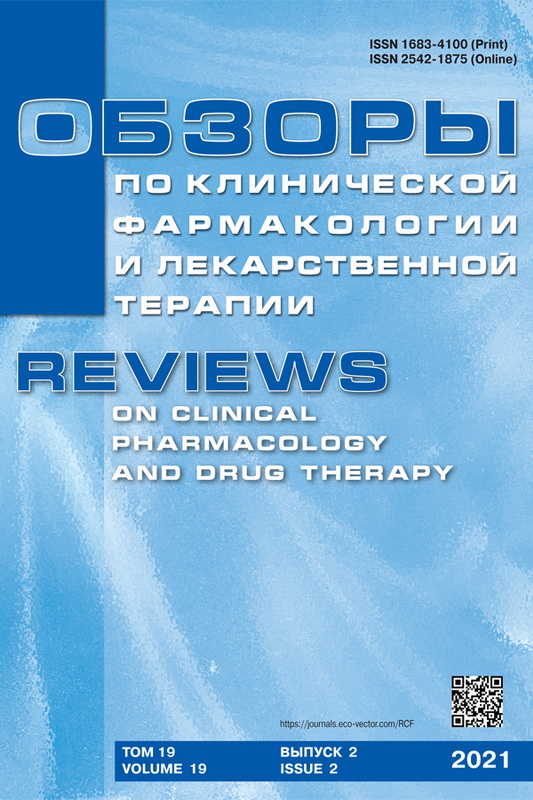Participation of HIF-1 in the mechanisms of neuroadaptation to acute stressful exposure
- Authors: Lyubimov A.V.1, Khokhlov P.P.1
-
Affiliations:
- Institute of Experimental Medicine
- Issue: Vol 19, No 2 (2021)
- Pages: 183-188
- Section: Original study articles
- Submitted: 03.08.2021
- Accepted: 03.08.2021
- Published: 09.08.2021
- URL: https://journals.eco-vector.com/RCF/article/view/77305
- DOI: https://doi.org/10.17816/RCF192183-188
- ID: 77305
Cite item
Abstract
BACKGROUND: New laboratory and instrumental technologies for analyzing the adaptive capabilities of a biological organism to acute stressful effects including hypoxic ones have significantly facilitated the diagnosis and fixation of adaptive behavioral reactions, physiological and biochemical changes. Much attention has been paid to the phenomenon of preconditioning — a positive effect from exposure to small doses of pathogenic factors. Hypoxia-inducible factor 1 (HIF-1) is one of the most promising markers for fixing the phenomenon of hypoxic preconditioning.
AIM: To study the mechanisms of neuroadaptation to acute stressful effects.
MATERIALS AND METHODS: Using models of immobilization, hypothermic exposure, and electrocutaneous irritation of rat paws were carried out for the assessment of the mechanisms of neuroadaptation. Changes in the HIF-1 concentration were recorded in the blood and in the structures of the brain.
RESULTS: The maximum concentration of HIF-1 was found in the amygdala (±230 pg / mg), in the prefrontal cortex it was ±50.8 pg / mg in the control group. Hypothermal exposure increased the HIF-1 content in the amygdala by more than 4 times, while emotionally pain and immobilization showed a slight decrease in HIF-1 in the amygdala. All types of stressors significantly increased the concentration of HIF-1 in the prefrontal cortex of animals. The most pronounced changes were observed when using the model of emotional pain stress. The obtained experimental data allow us to draw with caution a conclusion about the universality and unity of multicomponent mechanisms of adaptation to acute stressful effects.
Keywords
Full Text
About the authors
Andrey V. Lyubimov
Institute of Experimental Medicine
Author for correspondence.
Email: lyubimov_av@mail.ru
ORCID iD: 0000-0001-9829-4681
SPIN-code: 5307-4186
PhD (Medicine)
Russian Federation, 12, Acad. Pavlov str., Saint Petersburg, 197376Platon P. Khokhlov
Institute of Experimental Medicine
Email: platonkh@list.ru
ORCID iD: 0000-0001-6553-9267
SPIN-code: 8673-7417
PhD (Biochemistry)
Russian Federation, 12, Acad. Pavlov str., Saint Petersburg, 197376References
- Nesterov YuV, Teplyi DL, Chumakova AS. Vozrastnaya dinamika i tkanespetsificheskie osobennostie svobodnoradikal’nykh protsessov vnutrennikh organov i tsentral’noi nervnoi sistemy. Natural sciences. 2008;2(23):73–76. (In Russ.)
- Chumakova AS, Teplyi DL, Neterov YuV. Izmeneniya svobodnoradikal’nykh protsessov v razlichnykh organakh krys raznogo vozrasta pri ostrom stresse. Biologicheskie issledovaniya. 2009;(4):34–37. (In Russ.)
- Karrnan Y. Neuroendocrine-immune network in stress. The Laboratory Mouse. NY: Acad. Press., 2004. P. 301–309 p. doi: 10.1016/B978-012336425-8/50072-8
- Zarubina IV, Shabanov PD. From the S.P. Botkin’s idea of «preexposure» to preconditioning phenomenon. Perspectives for use of phenomena of ischemic and pharmacological preconditioning. Reviews on clinical pharmacology and drug therapy. 2016;14(1):4–28. (In Russ.) doi: 10.17816/RCF1414-28
- Cecchi C, Fiorillo C, Sorbi S, et al. Oxidative stress and reduced antioxidant defenses in peripheral cells from familial Alzneimer’s patients. Free Radic Biol Med. 2002;33(10):1372–1379. doi: 10.1016/S0891-5849(02)01049-3
- Wang G, Semenza G. Purification and characterization of hypoxia-inducible factor 1. J Biol Chem. 1995;270(3):1230–1237. doi: 10.1074/jbc.270.3.1230
- Wang G, Jiang B, Rue E, Semenza G. Hypoxia-inducible factor 1 is a basic-helix-loop-helix-PAS heterodimer regulated by cellular O2 tension. Proc Natl Acad Sci USA. 1995;92(12):5510–5514. doi: 10.1073/pnas.92.12.5510
- European Convention for the Protection of Vertebrate Animals Used for Experimental and Other Scientific Purposes. Strasburg. Council of Europe, 1986. 51 p.
- Chumakova AS, Ryabykina NV. Influence of the sharp emotional and painful stress on tissue-specific and age features of free radical processes at different stages of postnatal ontogenesis. Natural sciences. 2014;4(49):82–87. (In Russ.)
- Luk’yanova LD. Signal’nye mekhanizmy gipoksii. Moscow: Russian Academy of Science; 2019. 215 p. (In Russ.)
- Baranova KA, Rybnikova EA. Remote ischemic pre- and postconditioning abolished delayed HIF-1α expression in the rat hippocampus alongside with the correction of experimental post-traumatic stress disorder. Medical academic journal. 2018;18(2):48–53. (In Russ.) doi: 10.17816/MAJ18248-53
- Levchenkova OS, Kulagin KN, Novikov VE. Cerebroprotective action of pharmacological and hypoxic preconditioning in brain ischemia. Vestnik of the Smolensk state medical academy. 2017;16(2):15–21. (In Russ.)
- Ivan M, Kondo K, Yang H, et al. HIFα targeted for VHL-mediated destruction by proline hydroxylation: implications for O2 sensing. Science. 2001;292(5516):464–468.
- Tuter DS, Komarov RN, Glasachev OS, et al. Remote ischemic preconditioning with the use of lower limb before coronary artery bypass surgery with cardiopulmonary bypass and anesthesia with propofol. Kardiologiia. 2019;59(2):38–44. (In Russ.) doi: 10.18087/cardio.2019.2.10216
- Chepranova ZhYu, Yatsenko YeA, Lisikh YeA, Kapustina ZA. Phenomenon of preconditioning in the aspects of the ischemic brain damage. Medicine. 2019;7(1):109–122. (In Russ.) doi: 10.29234/2308-9113-2019-7-1-109-122
- Kryukov EV, Shakhnovich PG, Tagirova GK, et al. Poisk sovremennykh laboratorno-diagnosticheskikh prediktorov ehffektivnosti chreskozhnogo koronarnogo vmeshatel’stva u bol’nykh s ishemicheskoi bolezn’yu serdtsa. Russian cardiology bulletin. 2020; S:55–56. (In Russ.)








